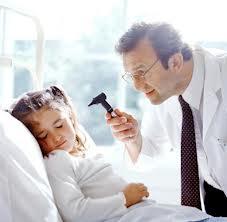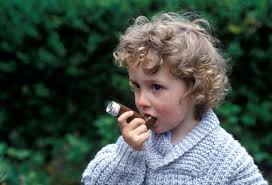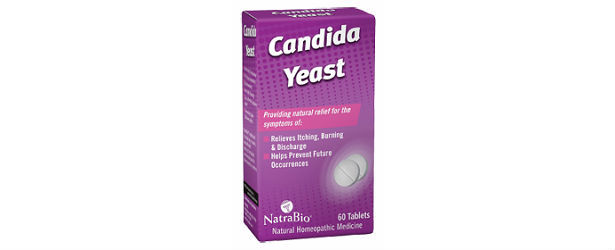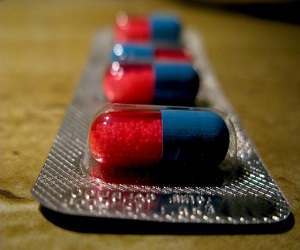Children and Yeast Infection
It may sound a little cruel, but children or infants can get yeast infections, too. Unfortunately, babies cannot determine and complain about the infection and its symptoms. A yeast infection can spread further to other parts of the body or worsen if not spotted and treated right away. Therefore, it’s important to know the physical signs of yeast infection; they are:
Rectal or Genital Rashes appear frequently and repeatedly. For new parents, they may simply disregard the symptoms, but this should be treated right away after consulting a pediatrician.
Usual Skin Rashes are often mistaken as summertime rashes or effects of poison ivy.
The usual skin rashes often appear in the arm area, legs, and even the belly where moisture accumulates from the upper parts of the body.
White Growth on The Lips and Tongue is often mistaken as milk residue. New parents often have this misdiagnosed because the oral thrush can be easily eliminated after water or fruit juice is given to the baby. Though, these liquids may eliminate the thrush, they are not sufficient to prevent the yeast infestation from reoccurring.
Escalating and Reoccuring Skin Rashes that usually appear during the rainy season are an indication of yeast infection. But new parents often disregard these symptoms and think that these physical conditions are nothing but normal.
 Recurring Ear Infection can also be an indication that there is an overgrowth of yeast in the ear. It is important to have a pediatrician check the ear condition right away in order to get the right treatment and prevent the spread of the infection inwards where it can cause greater damage to the ears. Simple ear yeast infection, doctors usually treat with ear drop medication, which contains antifungal chemicals.
Recurring Ear Infection can also be an indication that there is an overgrowth of yeast in the ear. It is important to have a pediatrician check the ear condition right away in order to get the right treatment and prevent the spread of the infection inwards where it can cause greater damage to the ears. Simple ear yeast infection, doctors usually treat with ear drop medication, which contains antifungal chemicals.
Sugar-filled Food Cravings are not really unusual, especially for kids, but too much sugar can make the yeast grow faster and uncontrollably. This is why it is important to monitor the sugar intake of kids and even adults to make sure that it is not exceeding the daily intake allowance.
Headache is one of the symptoms of yeast infection as well, and children, especially infants, may not be able to tell their parents or guardians what they are really feeling. Nevertheless, if the infant shows any signs of discomfort, consult a pediatrician immediately to determine what is really going on.
It may seem odd but hyperactivity among children can also be a symptom of yeast overgrowth somewhere in the body. While children are normally active and playful, watch out for hyperactiviity beyond the normal level. Hyperactive disorders are pretty normal nowadays, especially with the kind of food that we have in the market. In medicine, hyperactivity is usually treated with acceptable medications that alter the internal or natural cause, such as hormonal or chemical imbalances in the body.
Irritability is also common among children and even adults, but when it exceeds the normal frequency of mood swings, this may be an indication that something is wrong in the body, which includes yeast overgrowth.
Respiratory Problems like Stuffiness of the Nose, and Frequent Coughing are easily treated by common pharmaceutical medications, but these medications also contain chemicals or ingredients that affect the physiology of the body responsible for regulating the growth of foreign elements including yeast and fungi.
 The medication used to treat asthma as well as ear infection antibiotics can also lead to yeast overgrowth, especially if used frequently. These types of medication include chemicals capable of eliminating natural enzymes in the body that help regulate the growth of yeast and fungi as part of the overall immune system.
The medication used to treat asthma as well as ear infection antibiotics can also lead to yeast overgrowth, especially if used frequently. These types of medication include chemicals capable of eliminating natural enzymes in the body that help regulate the growth of yeast and fungi as part of the overall immune system.
This is especially true for children’s not fully developed immunity makes them vulnerable to candidiasis and all other yeast overgrowth complications. Daily food intake, nutrients, or diet are also considering factors for yeast infection. Keep in mind that such people, young or adult, with high sugar levels in the blood are more prone to yeast or fungal infection due to the fact that yeast feeds on sugar as well.
Sugar is like the fertilizer making them grow faster than usual. Feeding children with healthier choices of food, especially those that are less in carbohydrates and sugar, helps make sure that the yeast is maintained and controlled. Although it can be hard sometimes to prevent the kids from munching on the usual snacks like sweets, artificial or flavored juices, colas, and all other manufactured snacks in the market, parents should limit their intake of these. Educating kids about the consequences of eating too much unhealthy food helps, especially if done at an early age. Doing this helps children understand the importance of a healthy lifestyle and diet in order to keep their body in good shape all the way. Keeping the sugar down to an acceptable level of intake will ensure that good condition of the immune system particularly reducing the risk of developing diabetes.

 Subscribe Now
Subscribe Now












